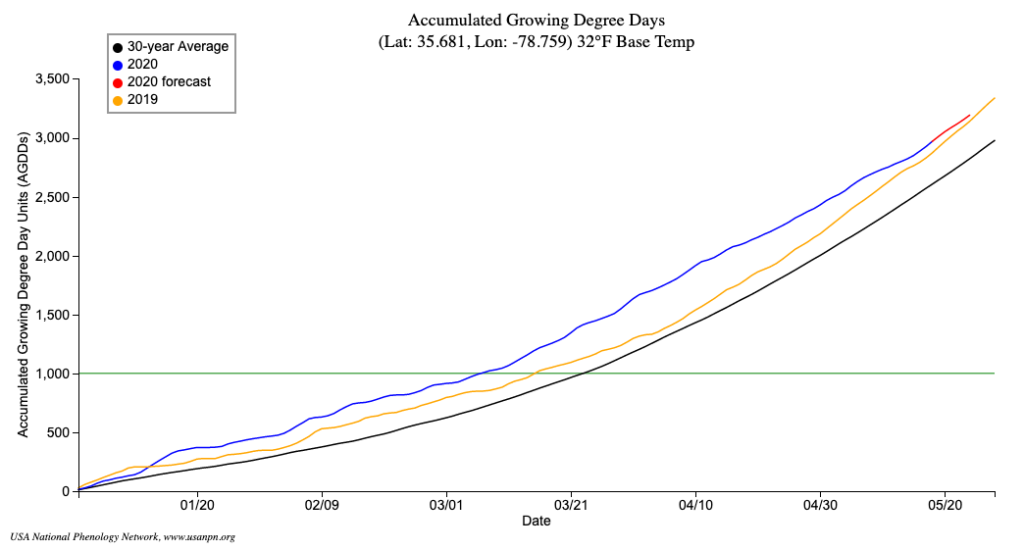Cool Spring Has Slowed Growth of Warm-Season Turfgrasses
go.ncsu.edu/readext?692206
en Español / em Português
El inglés es el idioma de control de esta página. En la medida en que haya algún conflicto entre la traducción al inglés y la traducción, el inglés prevalece.
Al hacer clic en el enlace de traducción se activa un servicio de traducción gratuito para convertir la página al español. Al igual que con cualquier traducción por Internet, la conversión no es sensible al contexto y puede que no traduzca el texto en su significado original. NC State Extension no garantiza la exactitud del texto traducido. Por favor, tenga en cuenta que algunas aplicaciones y/o servicios pueden no funcionar como se espera cuando se traducen.
Português
Inglês é o idioma de controle desta página. Na medida que haja algum conflito entre o texto original em Inglês e a tradução, o Inglês prevalece.
Ao clicar no link de tradução, um serviço gratuito de tradução será ativado para converter a página para o Português. Como em qualquer tradução pela internet, a conversão não é sensivel ao contexto e pode não ocorrer a tradução para o significado orginal. O serviço de Extensão da Carolina do Norte (NC State Extension) não garante a exatidão do texto traduzido. Por favor, observe que algumas funções ou serviços podem não funcionar como esperado após a tradução.
English
English is the controlling language of this page. To the extent there is any conflict between the English text and the translation, English controls.
Clicking on the translation link activates a free translation service to convert the page to Spanish. As with any Internet translation, the conversion is not context-sensitive and may not translate the text to its original meaning. NC State Extension does not guarantee the accuracy of the translated text. Please note that some applications and/or services may not function as expected when translated.
Collapse ▲Lots of homeowners have been expressing concern over the appearance of various warm-season turfgrasses this spring. Bermudagrass, centipedegrass, zoysiagrass, and St Augustinegrass have all been slow to get going this spring. Conversely, cool-season grasses like tall fescue, Kentucky bluegrass, ryegrasses, and creeping bentgrass have thrived by our extended spring conditions.
Just a quick recap, our winter in NC this year was very warm. As a result, many warm-season grasses did not go dormant. At one point in early March, we were about 10-14 days ahead of 2019 and about 21 days ahead of the 30 year average for accumulated growing degree days (GDD). Then, from about mid-March until mid-May, our weather has been characterized by cooler temperatures. During this 60-day window, we have given back nearly all of the GDDs compared to 2019 (we are still ahead of the 30-year average). This can be seen in the graph of accumulated GDDs for Raleigh.
What does this mean? The bottom line is, warm-season grasses have struggled to get going this spring. They greened-up quickly due to the warm winter, but for the last 60 days, they have not made any progress. In other words, they are not growing. To make matters worse, winter annual weeds like Poa annua, henbit, chickweed, and a long list of other winter annual weeds have hung around. This has made warm-season grasses look less-than-ideal this spring.
What needs to be done? First of all, there is absolutely nothing wrong with warm-season grasses. They will be fine. By mid-to-late June, warm-season grasses will be growing normally in NC and all of this will just be a memory. However, in the meantime, my recommendation is to mow the warm-season grasses to reduce competition and the unsightliness of winter annual weeds. This will not only help the appearance, it will allow more sunlight into the canopy and help the warm-season grasses start growing more quickly. 



